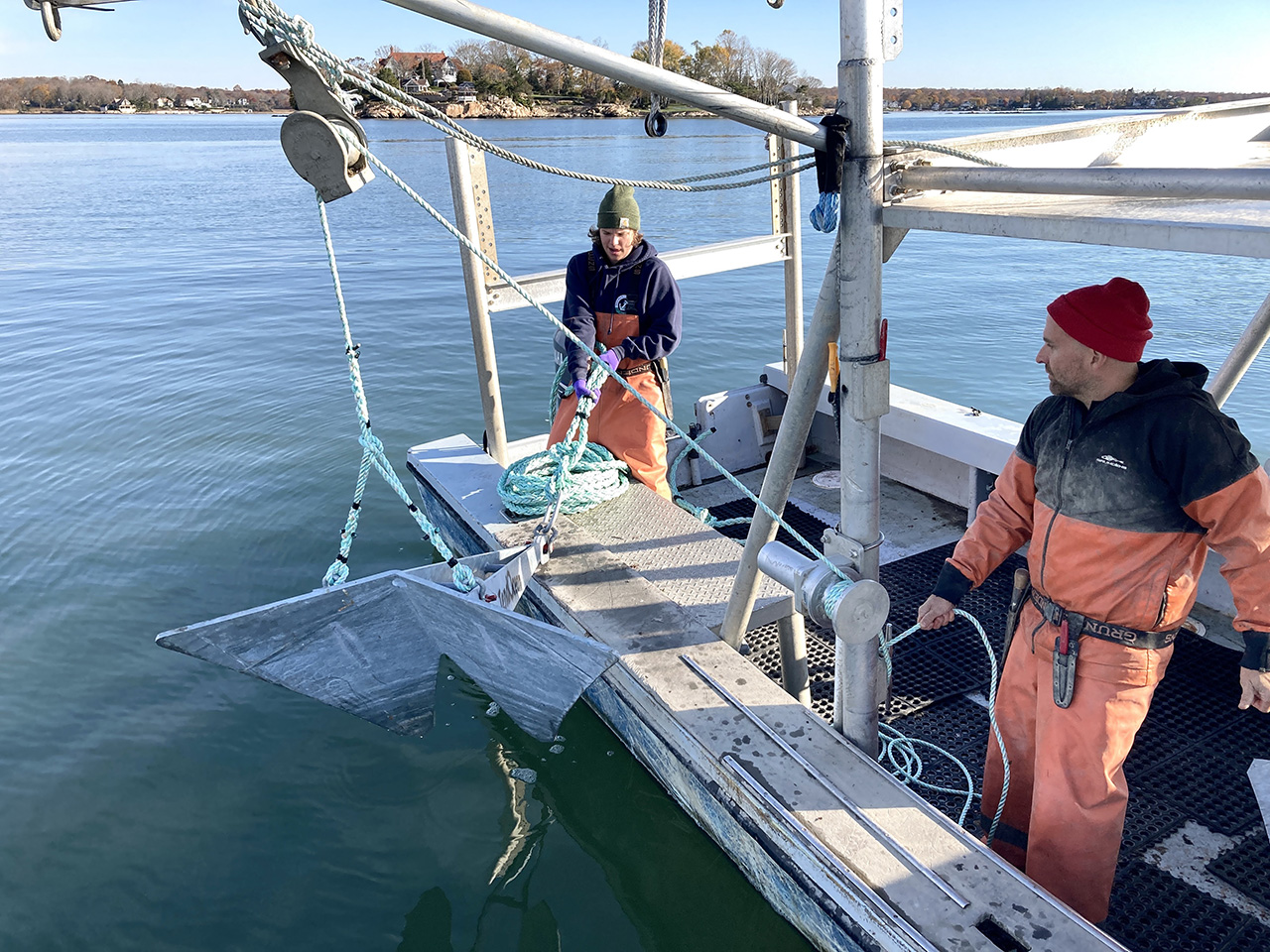It can take up to a week for your anchors to settle into the substrate after you’ve deployed them on your farm. Make sure to come back to check on your arrays, and reposition any anchor that has moved significantly from its initial deployment before you outplant on that array.
Back to: Farm Installation
Do your best to choose really calm weather for setting your gear. The more relaxed you can be about the weather, the more attention you can devote to getting your systems installed and set up correctly, and the more likely your anchors are to end up in the right spot.
Use a GPS and your pre-marked anchor coordinates to locate your boat in the right spot for deployment. Then, lower the anchor over the side of the boat using the tag line. You’ll feel the anchor hit bottom when the line you’re deploying goes slack. At this point, it’s possible to adjust the position of your anchor slightly by lifting up on the tag line so that the anchor is hovering a foot or so off the bottom. Cleat off the line and drive the boat around to the exact position you’re targeting, then release the anchor for the final drop.

Watch this video to see how we deploy embedment anchors on the GreenWave farm.
After you’ve set one anchor and are satisfied with its location, move to where you plan to place the second anchor on the other side of the array. Using your GPS and best judgment, repeat the process to set the second anchor in line with the first, and roughly the correct distance apart. We suggest using a dummy line to help you determine the correct distance apart before you tow on your second anchor to straighten the array and tension the system. We’ll delve into the details of this process in the next lesson.
After you’ve set your anchors in their final location, mark the GPS coordinates on your plotter or hand-held GPS. This gives you a baseline to reference from if the gear appears to have moved mid-season, and can be useful in locating lost gear.